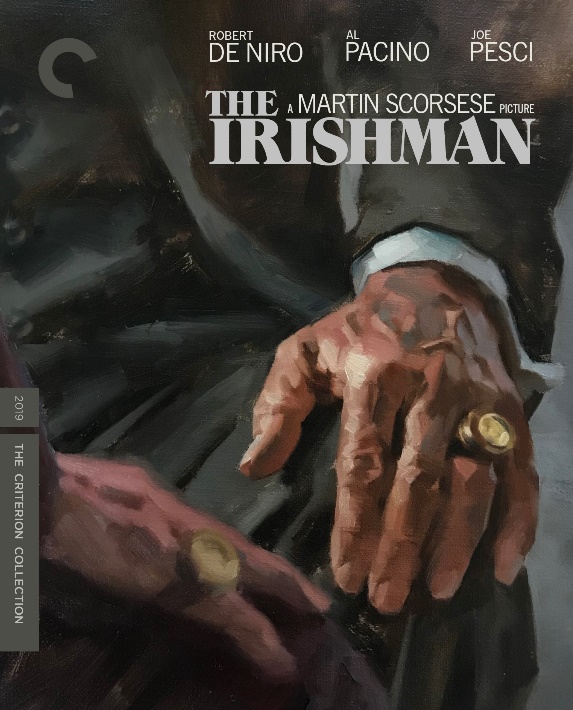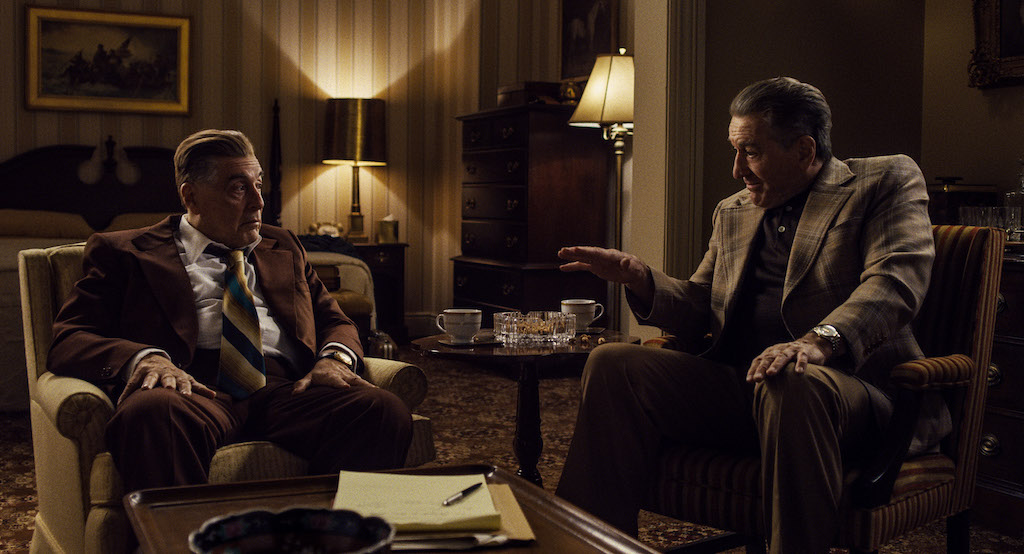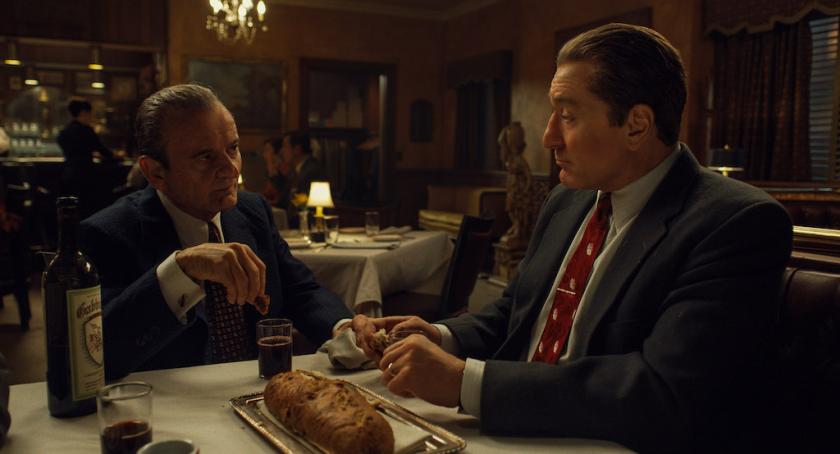The big talking points of Martin Scorsese’s lauded return to the gangster genre, 2019’s The Irishman, were his reunion after 25 years with Robert De Niro and Joe Pesci, and the state-of the-art “de-aging” process that enabled that pair and Al Pacino to play their characters over a period of 30 years.
Just as significant as these factors, however, was the new thematic dimension and depth that Scorsese and his collaborators brought to the genre – the perspective of time, the poignancy that comes with the realisation that even killers grow old, become regretful, suffer the effects of the lives they’ve destroyed, not least their own.
This pathos, played to the hilt by De Niro as Sheeran, lends The Irishman an elegiac quality that allies it to another masterful gangster picture, Sergio Leone’s Once Upon A Time in America – as it happens, a film that used conventional make-up to age De Niro in the opposite direction.
Alongside a new 4K digital master of the film itself, this Criterion release comes with a number of cracking extras, many of which lend insight and reinforcement to these key elements of the film: the reunion, the theme and the technology. What really resonates is the impression of a group of filmmakers in their Seventies bringing years of experience, expertise and mutual affection to the process.
 In the “making of” documentary, Scorsese talks of how De Niro brought him the source material for the project, Charles Brandt’s book I Heard You Paint Houses, which recounts the life and times of Mafia enforcer and hitman Frank Sheeran, including the claim that he killed trade union boss Jimmy Hoffa that becomes the heart of the film. It was De Niro’s impassioned response to the character that convinced Scorsese that they'd finally found their next collaboration.
In the “making of” documentary, Scorsese talks of how De Niro brought him the source material for the project, Charles Brandt’s book I Heard You Paint Houses, which recounts the life and times of Mafia enforcer and hitman Frank Sheeran, including the claim that he killed trade union boss Jimmy Hoffa that becomes the heart of the film. It was De Niro’s impassioned response to the character that convinced Scorsese that they'd finally found their next collaboration.
“We have another perception of life [now], particularly of that world, the milieu which I have dabbled in a number of times, from Mean Streets to Goodfellas to Casino,” he says. And with that perception, The Irishman became “a very internal, very intimate film”.
While most of the key players feature among the talking heads, some of the more entertaining and astute comments come from a newcomer to the troupe, Bobby Cannavale, who plays mob lieutenant Skinny Razor. He recalls Scorsese coaching him for a scene in which his character is interrupted by Sheeran at dinner. “Why’s he asking about steak?” Scorsese asks. “Maybe he’s just asking me if I like steak,” Cannavale suggests. “But what’s he mean by that?!” No wonder there’s such an edge in the dialogue of so many Scorsese scenes.
The disc’s roundtable gathering of Scorsese, De Niro, Pesci and Pacino elicits a profound OMG moment. What a quartet to have seated around a restaurant booth – a particular coup because of Pesci’s media reluctance. The conversation is relaxed, genial, led by Pacino (gleefully aware of the club he’s joined), more a pleasure than a revelation.  It’s easy to see how the affection around this table would feed into the performances of what, in a twisted sense, is a love triangle: Sheeran torn between his Mob patron Russell Bufalino (Pesci) and his union friend and benefactor Hoffa (Pacino), who is bullishly making enemies with the wrong people. As De Niro notes, Sheeran’s dilemma makes the film about “loyalty, brotherhood, betrayal – betrayal for a reason he doesn’t understand.”
It’s easy to see how the affection around this table would feed into the performances of what, in a twisted sense, is a love triangle: Sheeran torn between his Mob patron Russell Bufalino (Pesci) and his union friend and benefactor Hoffa (Pacino), who is bullishly making enemies with the wrong people. As De Niro notes, Sheeran’s dilemma makes the film about “loyalty, brotherhood, betrayal – betrayal for a reason he doesn’t understand.”
The actors also talk of the digital de-ageing process, which is given full exposition in an extra revealing the extraordinary efforts of renowned special effects company Industrial Light & Magic in creating both a camera system and software that would effectively allow the actors to go back in time.
Even if the end results of that process still don’t feel completely successful, the sheer effort begs a little indulgence. There are also some striking comments made by the special effects team, not least the fact that they were seeking to create younger versions of the characters, not the actors; before we think, “but aren’t they the same?”, we’re reminded that these actors have always been so chameleon – even without make-up – that there was never a definitive 30-year-old De Niro, or 40-year-old Pacino for the team to refer to.
Elsewhere, American critic Farran Smith Nehme offers a smart video essay charting the correspondences, in style and content, between The Irishman and Scorsese’s earlier gangster pics, especially Goodfellas. And Scorsese himself talks us through the direction of one of The Irishman’s key sequences, with typically fascinating detail.  Finally, there’s a telling package involving archive footage of two of the film’s trio of principal real-life figures.
Finally, there’s a telling package involving archive footage of two of the film’s trio of principal real-life figures.
Interviewed by Brandt, an ageing Sheeran sports the same garishly over-the-top watch and ring that De Niro’s Irishman will wear so proudly in the film; when he talks, without irony, of his deep friendship with Hoffa, who gave him the watch, the resonance is positively chilling. Sheeran also gives a very icky reason why you never kill someone in a car.
The other archive is with Hoffa, on the campaign trail in scenes that Scorsese has in some way reproduced, and giving an extensive interview in which the infamous Teamster boss comes across as tough, aggressive, uncompromising – and exuding the same sense of invincibility that turns him into such a tragic figure in The Irishman.














Add comment